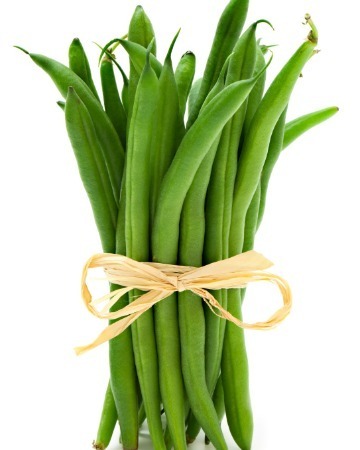6 Ways To Get The Most Out Of Your Vegetables
You think you've gone all healthy by buying mostly fruits and vegetables, but then you hear that cooking them actually makes all the nutrients disappear — so what's the point? Well, there's a little more to it than that. The purpose of cooking fruits and vegetables is to change the texture (softening tough vegetables or adding a crispness to others), but the problem is balancing this change with a minimal loss in nutritive value.
While cooking destroys some of the nutrients in food, some foods actually benefit from being cooked (like tomatoes and carrots) because their cell walls are broken down, making the nutrients easier to digest. However, for greens like kale or spinach, boiling in water without sufficient salt will cause the nutrients to leach out. There are some steps you can do to minimize the damage, it just depends on what you're cooking and knowing how to cook it.
When it comes to boiling vegetables, many chefs will claim that they never boil anything (it's unverified as to whether or not this includes blanching). And there's a good reason for that — when boiled, many green vegetables lose their nutrients to the water, which is one reason why people encourage the use of leftover boiling water for making stocks. However, salt expert Mark Bitterman and food scientist Harold McGee both agree that if you salt water to about the concentration of seawater (three % or two tablespoons per quart/liter of water), then that will minimize the amount of nutrients that are drawn out.
So lesson to walk away with? Salt your water before boiling or blanching — except for starchy vegetables. Vegetables like potatoes shouldn't be cooked in salted water or their exterior will become soft and mushy while the inside cooks. Instead, opt for salting these towards the end of the cooking process.
For more tips on how to best cook greens to retain the most nutrients, we turned to Barbara Scott-Goodman, co-author of the recently published book Eat Greens. Check out what she has to say below, plus more recipe ideas and advice on cooking these healthy vegetables.
Basic Cooking Advice — Less is More
Most greens can be steamed or blanched, but I would suggest everything should be cooked very lightly. The greens in our book focus on very fresh produce; the fresher you can get the better. And then cooking them quickly will keep the most nutrients in them, especially with leafy greens like kale and chard. I think when you're cooking these kinds of things, less is more. For green beans, if they aren't the freshest or crunchiest, those are best to braise with onions or broth until they get very tender.
The sooner you eat your vegetables (meaning after they were harvested), the more nutrients will still be in the foods.
A Simple, Yet Delicious Way to Season Vegetables
I like a little bit of salt and pepper. I'm also a huge fan of red pepper flakes, they are so good with broccoli rabe. They just bring that kind of heat. Liz and I tried a lot of spices when making these recipes, and there were ones that we added a lot of cumin, celery salt, and certain oils like sesame oils to for cooked greens. We tried a lot and worked with different spices, to make bland vegetables like zucchini taste better (try using ground cumin).
 Creative Ways to Cook with Kale
Creative Ways to Cook with Kale
Kale chips are all the rage right now and those are really great. Kale is great in soup and you don't need to cook it before you add it, you just need to chop it. It's such a good green to add to soup and adds a wonderful flavor. This also takes away the worry of losing any of the nutrients. I also like to add kale to beans, like white beans and black beans, that's a really good combo. And a lot of people use it in salads.
Explore New Greens
Dandelion greens are really really good. I also find that people don't use leeks as much as they could; I think leeks are a really wonderful green. You can just poach leeks and just have them with some vinaigrette. The only problem is that they have to be cleaned, and you can also do a nice braise. Escarole is also a great green. It's usually cooked, but I recently had an escarole salad topped with a vinaigrette and Parmesan cheese and it was really good.
I would say a lot of it is about the shopping, go to the farmers markets. That was sort of the inspiration for us to do this book. One summer I was working with at the farmers' market and I realized that people didn't really know how to cook with greens. They were intimated by all of the produce and unknown varieties. So I suggest looking around the market, noticing the new things that pop up, and asking the farmers or the people working at the market for advice. You can always get good ideas of how to cook them from them.
Click here to see the Savoy Cabbage, Raddichio, and Apple Slaw recipe.
Click here to see the Roasted Potato and Green Bean Salad recipe.
Click here to see the Spinach, Bacon, and Tomato Salad recipe.


